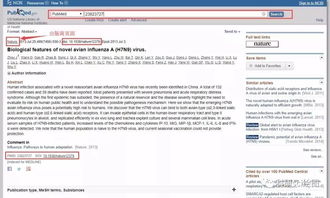Content:
Fishing is an art that requires patience, skill, and a thorough understanding of various techniques. One such technique is the art of hooking fishing line to the tackle. This seemingly simple task can significantly impact the success of your fishing trip. In this article, we will delve into the fishing techniques and provide a step-by-step guide on how to hook fishing line to the tackle efficiently.
Understanding the Basics
Before we dive into the details of hooking fishing line to the tackle, it's essential to have a basic understanding of the equipment involved. The tackle consists of several components, including the rod, reel, line, lure, and hook. Each of these components plays a crucial role in the fishing process.
Choosing the Right Tackle
The first step in mastering the art of hooking fishing line to the tackle is selecting the appropriate equipment. Here are a few factors to consider when choosing your tackle:
- Rod: The rod should be suitable for the type of fishing you plan to do. For example, a spinning rod is ideal for casting lighter lures, while a baitcasting rod is better for heavier lures.
- Reel: The reel should match the rod's weight and line capacity. Spinning reels are perfect for light to medium-duty fishing, while baitcasting reels are ideal for heavier lures and larger fish.
- Line: The line should be suitable for the type of fish you're targeting and the conditions of the water. Monofilament, fluorocarbon, and braided lines are the most common types of fishing line.
- Lure: The lure should mimic the movement and appearance of the fish's natural prey. It's essential to choose a lure that is appropriate for the type of fish you're targeting.
- Hook: The hook should be suitable for the size and species of fish you're targeting. The hook size should be large enough to securely hold the bait but small enough to avoid damaging the fish.
Step-by-Step Guide to Hooking Fishing Line to the Tackle
Now that you have the right tackle, let's go through the process of hooking the fishing line to the tackle.
Attach the line to the reel: Begin by threading the line through the rod guides, starting from the tip of the rod and working your way down. Once the line is through the guides, tie a knot at the end of the line. The most common knots for attaching line to a reel are the Palomar knot and the improved clinch knot.
Spool the reel: Once the line is tied, spool the reel with the appropriate amount of line. Be sure to leave enough line for casting and fighting fish.
Attach the lure to the hook: Thread the lure onto the hook, ensuring that it is centered and secure. You may need to use a lure keeper or a small split ring to hold the lure in place.
Hook the line to the lure: There are several methods for hooking the line to the lure. The most common methods are the Texas rig, Carolina rig, and dropshot rig. Here's a brief overview of each:
a. Texas rig: Thread the line through the eye of the hook and then back through the lure's skirt. Secure the line to the hook with a Palomar knot or an improved clinch knot.
b. Carolina rig: Thread the line through the eye of the hook and then tie a swivel to the line. Attach a leader to the swivel and then tie the lure to the leader.
c. Dropshot rig: Thread the line through the eye of the hook and then tie a small weight to the line. Attach the lure to the end of the line with a Palomar knot or an improved clinch knot.
Test the rig: Once the line is hooked to the lure, give the rig a gentle tug to ensure that everything is secure. Make any necessary adjustments to the knot or the position of the lure.
Fishing Techniques
Now that you have your tackle ready, it's time to learn some fishing techniques to help you catch more fish.

Cast: Practice your casting technique to ensure you can cast your lure accurately and with enough distance. There are various casting techniques, such as the overhead cast, sidearm cast, and roll cast. Choose the one that works best for you and your fishing environment.
Retrieve: The retrieve technique depends on the type of lure you're using. For example, a spinnerbait requires a steady retrieve, while a jig requires a more erratic motion. Experiment with different retrieves to see which one works best for the fish you're targeting.
Bait presentation: Pay attention to how you present your bait to the fish. This includes the speed, depth, and angle of the retrieve. Adjust your technique based on the fish's behavior and the conditions of the water.
Patience: Remember that fishing is a waiting game. Be patient and give the fish time to react to your bait. Don't rush the process, as this can spook the fish.
Conclusion
Hooking fishing line to the tackle is an essential skill for any angler. By following the steps outlined in this article, you can ensure that your tackle is set up correctly and efficiently. With practice and patience, you'll be able to catch more fish and enjoy your fishing trips even more. Happy fishing!












